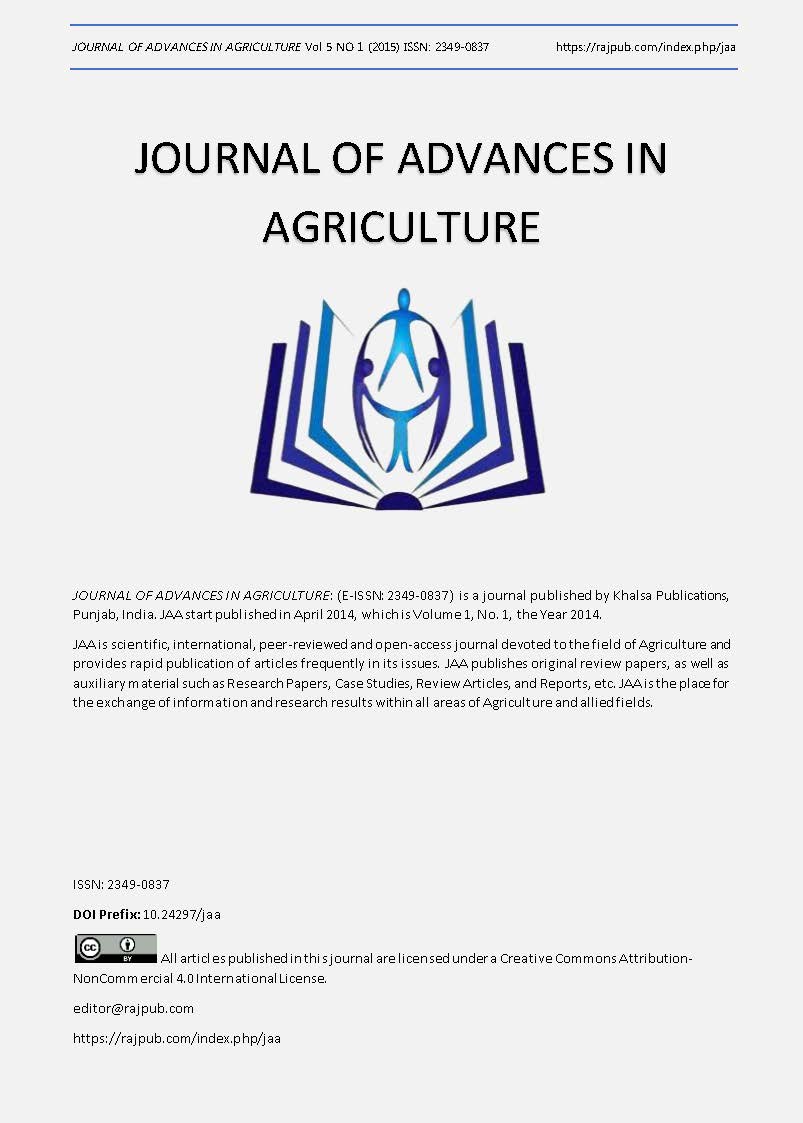Genetic diversity of grapevine (Vitis vinefera L.) from Tanzania as revealed by ISSR markers
DOI:
https://doi.org/10.24297/jaa.v5i1.4512Keywords:
Key words, Genetic distance, Genetic diversity, Grapevine, ISSR marker, PolymorphismAbstract
Grapevine (Vitis vinifera L.) is a perennial horticultural crop which is used worldwide for production of wine, table grapes, dried fruits and grape juice. In spite of its importance as a cash crop, the purity of each variety and genetic diversity of this crop has not been identified. The study therefore, was conducted to assess the purity and genetic diversity among and within 10 varieties of grapevines represented by a total of 43 individual plants. By using nine ISSR primers, a total of 56 polymorphic bands were generated. Within variety diversity based on polymorphic bands ranged from 26.79% for Ruby seedless to 73.21% for Alphoncelavallee with a mean of 55.18 %, Neis genetic diversity of 0.089 0.308 with a mean of 0.202, Shannon information index of 0.137–0.445 with a mean of 0.302 and analysis of molecular variation (AMOVA) of 76.767% within varieties were detected. With all diversity parameters, the highest diversity was obtained from Regina, Alphoncelavallee, Syrah and Makutupora white varieties, whereas the lowest was from Ruby seedless. AMOVA showed a 23.23% between varieties variability was less than that of within varieties variation. Varieties differentiation with Fixation index (FST) was 0.23. From Jaccards pairwise similarity coefficient, Makutupora red and Chancellor were most related varieties exhibiting 0.976 meanwhile Queen of vineyard and Ruby seedless were most distantly related varieties with similarity of 0.408. Alphoncelavallee and Makutupora white varieties exhibited the highest genetic diversity. Therefore, these varieties should be considered for further improvement of this species.
Downloads
Downloads
Published
How to Cite
Issue
Section
License
 All articles published in Journal of Advances in Linguistics are licensed under a Creative Commons Attribution 4.0 International License.
All articles published in Journal of Advances in Linguistics are licensed under a Creative Commons Attribution 4.0 International License.




